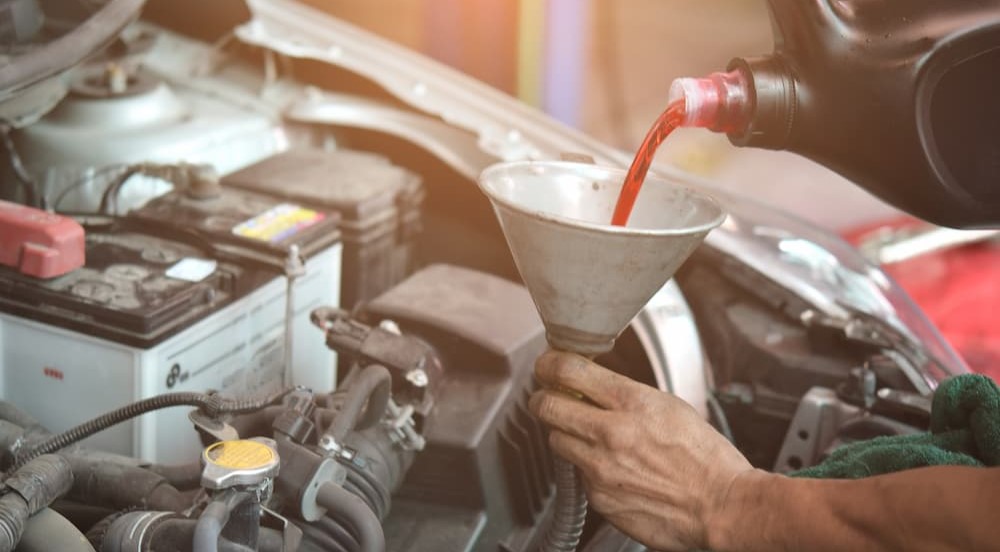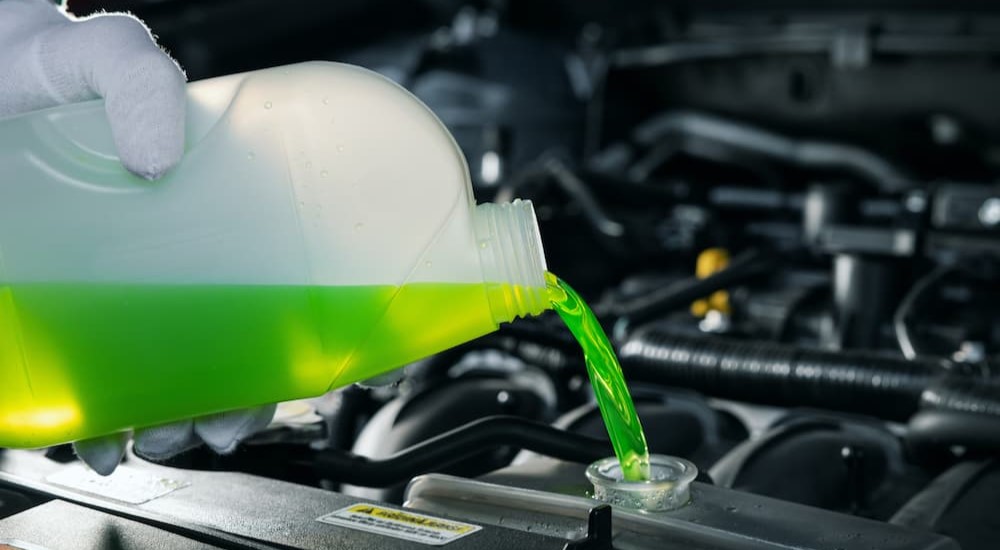The automatic transmission is a marvel of modern engineering, freeing up a driver’s right hand and providing a superior level of convenience when compared to manual transmissions. While they’re not for every driver, most have come to appreciate the myriad advantages an automatic transmission can offer. They are a lot easier to master than a manual and eliminate the possibility of stalling out on a hill or busy road, but there are some downsides.
An automatic transmission is more complex than a manual transmission and, therefore, more complicated and expensive to maintain. In fact, next to the engine itself, it’s one of the costlier components on any vehicle. A continuously variable transmission (CVT)––which is a type of automatic transmission that works without fixed gears––can be even pricier to repair, illustrating just how important keeping up with your maintenance schedule can be if you want to avoid an unplanned trip to the transmission shop.
So, what sort of maintenance tasks should a driver keep in mind when servicing their automatic transmission, and does a CVT have any special requirements when it comes to routine maintenance? If you’re looking to keep your automatic vehicle on the road for longer, you’ll want to read on as we answer all that and more.
Check the Transmission Fluid
Keeping an eye on your automatic transmission fluid (ATF) is the easiest way to head off any transmission-related issues before they can spiral into expensive repairs. Transmission fluid plays an important role in your transmission and should never be treated as an afterthought. Unlike some of the other fluids in your vehicle, a transmission fluid check should normally be done while the engine is on and idling. Put the vehicle in park, pull out the dipstick, clean it, then insert it again to get an accurate reading. The transmission fluid should fall somewhere in the middle of the two dots on the end of the dipstick and should be clear and (usually) red. If the fluid is low, is dark or cloudy, or has a distinct burnt or rotten fish smell, you could be dealing with a leak or an issue somewhere within the transmission. This check should take place once a month as part of a maintenance routine that should also include checking the power steering fluid, brake fluid, motor oil, and radiator fluid.
Flush the Transmission Fluid
Even if your transmission fluid is in good shape during your monthly checks, you should still make sure to perform a full flush and replacement at regular intervals. Exactly how often this should be done depends on what the manufacturer recommends and how your vehicle is used. If you do a lot of towing, often drive in stop-and-go traffic, or experience dramatic elevation changes on a regular basis, a more regular flush and replacement might be in order.
A full transmission service doesn’t stop at a fluid flush and refill. If you’re trying to keep the transmission on your older, higher-mileage vehicle in tip-top shape, you should splurge for the full package. This includes dropping the transmission pan, draining the fluid, and replacing both the transmission fluid filter and pan gasket. Make sure to replace the ATF with the exact formula designed for your specific make and model and have the transmission fluid filter replaced at the same time. While the full service will cost a bit more, it will help keep your transmission operating smoothly.

Service the Cooling System
Your vehicle’s cooling system doesn’t just keep the engine from overheating; it pulls double duty to fulfill the same role for the transmission itself. Transmission fluid is cycled out of the gearbox and sent to the radiator (or, in some cases, an external cooler) before being returned to the transmission at a lower temperature. Like an overheated engine, an overheated transmission can lead to all sorts of problems, which is why routinely checking in on your vehicle’s cooling system is so essential.
Perform a monthly check of your radiator’s coolant levels to make sure they fall within an acceptable range. A well-functioning engine really shouldn’t be losing a noticeable amount of coolant, so if your levels are low, it could signal a leak somewhere in the system. It’s also important to check that the coolant hasn’t become contaminated or oxidized. Coolant usually starts out a lighter color, so if it’s turned to a darker brown shade, it could signal a leak, a rusted radiator, or the presence of engine oil in the coolant due to a leaky head gasket.
Practice Good Driving Habits
While we tend to think of routine maintenance tasks like transmission fluid replacements and coolant checks as things that happen on a set schedule, the reality is that there are little things you can do to extend and improve the life and performance of your transmission every time you sit behind the wheel. Some of these tips are rather obvious and are routinely among the first lessons a new driver will learn. For example, don’t change gears while the car is moving, avoid stop-and-go driving, and don’t drive on a spare or mismatched tire for an extended period of time. You’ll also want to avoid the urge to keep your foot on the left pedal while driving, as even slightly engaging the brakes can prevent your transmission from engaging its overdrive gears that allow for better fuel consumption and less wear. While we’re on the subject of brakes, remember to use your parking brake whenever parking on a hill, as relying on the parking gear alone can stress the transmission.
Other tips are a little more contentious. Some drivers fear that letting the engine warm up on a cold morning can cause premature wear (not to mention waste gas), but this practice can actually pay dividends when it comes to preserving your transmission. Cold temperatures mean cold transmission fluid, which will be more viscous and have a harder time flowing where it needs to. If you’re not in the mood to wait, just remember to take it easy and avoid sudden acceleration until the engine temperature has risen at least 1/3 of the way up the dial. Many experts also suggest that drivers shouldn’t use their vehicles for towing if they want to get the best out of their transmission, especially if the towing task involves high temperatures or lots of elevation changes.
CVT Maintenance
Today’s automatic transmissions can be broken down into two main categories: conventional automatic transmissions and CVTs. A conventional automatic uses a set number of gears to churn out varying levels of torque. When the vehicle is in a lower gear, the transmission delivers maximum torque at the cost of top speed. As you move up through the gears, the equation flips, with the transmission providing less torque but allowing the vehicle to reach a higher speed. A CVT follows this same torque/speed trade-off but eschews gears for a set of pulleys.
One of these pulleys is connected to the engine, and the other is connected to the wheels, with a flexible belt or chain connecting the two. These pulleys aren’t fixed in place, which allows a CVT to deliver varying levels of torque based on the width of each pulley. As one pulley gets thicker, the other becomes thinner, changing the effective gear ratio. A CVT’s pulleys can technically provide an infinite number of gear ratios and do so in a smoother manner since there’s no abrupt shifting between gears. While most CVTs use this pulley approach, some employ more niche designs, such as the toroidal CVT or hydrostatic CVT.
Since their debut in the 1980s, CVTs have become an increasingly popular choice when designing a new vehicle, and it’s not hard to see why. CVTs can not only provide a smoother ride than a conventional automatic transmission, they also tend to be more fuel efficient: an important factor in an age when tightening emissions standards have led automakers to pull out every trick in the book to gain a few extra MPG. That said, there are some disadvantages to the CVT approach.
Some drivers ding the CVT for providing less of a connection between the gas pedal and engine, which can lead to a vehicle that just doesn’t feel as responsive as one powered by a regular automatic or manual transmission. CVTs are also tough to pair with larger engines, but the cost and complexity of repair and replacement are often cited as one of the technology’s biggest downsides. Not only are CVTs harder and more expensive to work on, but they also tend to not last as long as conventional automatic transmissions. These factors make routine maintenance even more important for a CVT-powered vehicle, but how does this differ from the maintenance checklist for a normal automatic transmission?
It largely comes down to the type of fluid that is used. The unique design of a CVT necessitates a specialized transmission fluid that’s designed with different properties than the fluid used in a normal automatic transmission. These properties allow the fluid to better lubricate the belt or chain while being able to withstand the high-pressure atmosphere of a CVT. CVTs also need to be kept at a pretty precise temperature for the transmission to work its best, and CVT fluid is better able to help achieve this balancing act. As with a conventional transmission, it’s important to make sure that CVT transmission fluid isn’t just uncontaminated but also filled to the correct level. In most CVTs, this level check can be performed using a dipstick, though some require a specialized tool. While some enterprising DIY mechanics might want to service their own automatic transmission, we’d recommend leaving CVT repair and maintenance to a professional. Not only is the system more complex, it’s also more expensive to repair if something goes wrong.

Pay Attention to Your Transmission!
Paying a little extra attention to your automatic transmission can make a world of difference when it comes to lifetime repair costs. If your transmission is slipping, producing a burning smell, or leaking fluid, you could already be experiencing the beginnings of a transmission-related issue. A rough idle, jarring shifts, and sluggish acceleration are other tell-tale signs, as is the obvious dashboard check engine or transmission light. While a transmission might seem complicated, doing something as simple as regularly checking the fluid level can go a long way toward heading off some of the worst possible outcomes. Servicing a transmission by dropping the pan to replace the filter is best left to the professionals, which is why it’s so important to find a reliable, trustworthy local mechanic or transmission shop that can keep your ride in good working order. With a little extra time and attention, it’s easy to keep your automatic transmission humming along for 200,000 miles or more, so don’t let routine maintenance fall by the wayside.

